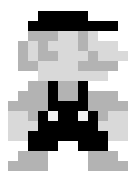Four Fundamental OS Concepts
Four Fundamental OS Concepts
- Thread: Execution context
- Full describes program state
- Program Counter, Registers, Execution Flags, Stack
- Address space (with or w/o translation)
- Set of memory addresses accessible to program(for read or write)
- May be distance from memory space of the physical machine (in which case programs operate in a virtual address space)
- Process: an instance of a running program
- Protected Address Space + One or more threads
- Dual mode operation / protection
- Only the “system” has the ability to access certain resources
- Combined with translation, isolates programs from each other and OS from programs
Thread of Control
- Thread: A single unique execution context
- Program Counter, Registers, Execution Flags, Stack, Memory State
- A thread is executing on a processor(core) when it is resident in the processor registers
- Resident means: Registers hold the root state (context) of the thread:
- Including program counter (PC), register & currently executing instruction
- PC points at the next instruction in the memory
- instructions are stored in the memory
- Including intermediate values for ongoing computations
- Can include actual values or pointers to values in memory
- Stack pointer holds the address of the top of stack (which is in memory)
- The rest is in memory
- Including program counter (PC), register & currently executing instruction
- A thread is suspended(not running) when its state is not loaded into the processor state pointing at some other thread
- Program counter register is not pointing at the next instruction from this thread
- Often: a copy of the last value for each register stored in memory
What happens during program execution
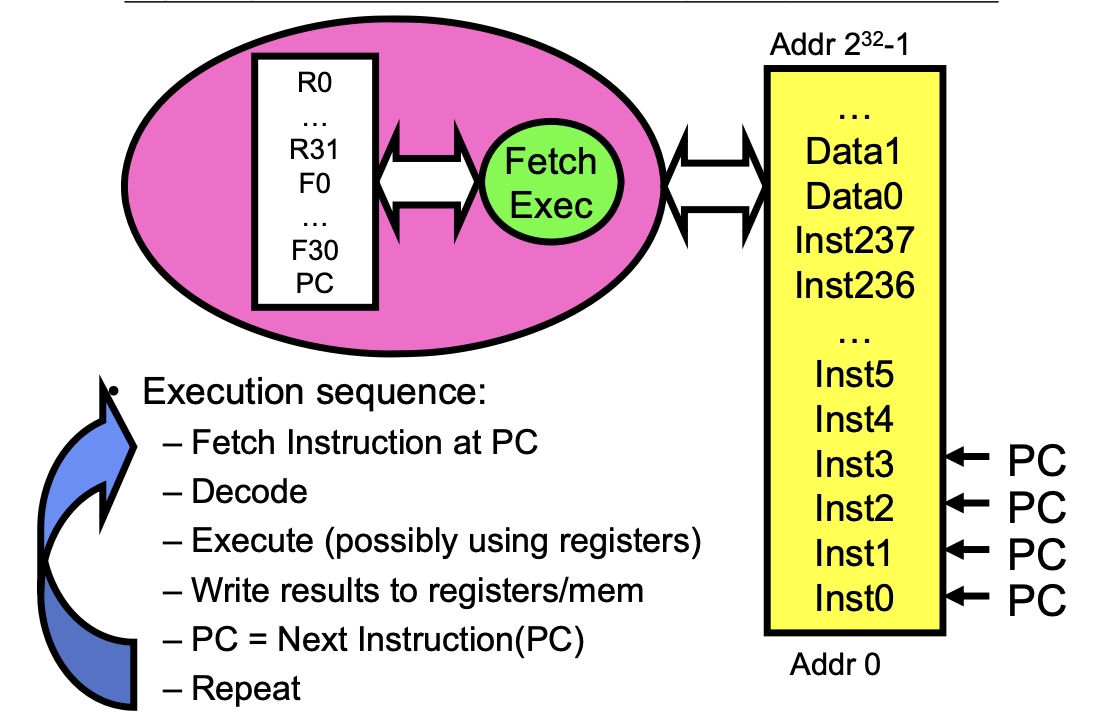
Execution sequence: – Fetch Instruction at PC – Decode – Execute (possibly using registers) – Write results to registers/memory – PC = Next Instruction(PC) – Repeat
Illusion of Multiple Processors
- Assume a single processor(core). How do we provide the illusion of multiple processors?
- Multiplex in time!
- Threads are virtual cores
- Contents of virtual core (thread):
- program counter, stack pointer
- Registers
- Where is “it” (the thread)?
- On the real physical core (when running)
- Saved in chunk of memory (when not running) - called the Thread Control Block(TCB)
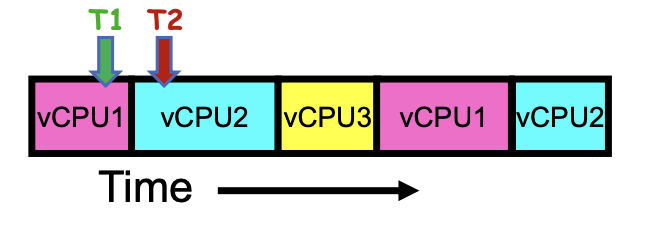
Consider:
- At T1: vCPU1 on real core, vCPU2 in memory
- At T2: vCPU2 on real core, vCPU1 in memory
During the context switch, what happened?
- OS saved PC, SP, … in vCPU1’s thread control block (memory)
-
OS loaded PC, SP, … from vCPU2’s TCB, jumped to PC
- How long does the context switch take?
The order of a few microseconds. If the switching time is too long or too frequently, this will cause a thrashing situation.
- What triggered this switch?
- Timer, voluntary yield, I/O, other things we will discuss
-
What happens during the context switch
- There is a centralized cache (TCB) per core to store the thread context. The cache itself is typically in a physical space.
- Thread Control Block (TCB)
- Holds contents of registers when thread not running
- Where are TCBs stored?
- For now, in the kernel
Address Space
The set of accessible addresses + state associated with them
- For 32-bit processor:
2^32 = 4 billionaddresses - For 64-bit processor:
2^64 quadrillionaddresses
What happens when you read or write to an address?
- Perhaps acts like regular memory
- Perhaps ignores writes
- Perhaps causes I/O operation (memory-mapped I/O)
- Perhaps causes exception (fault)
- Communicates with another program
- …
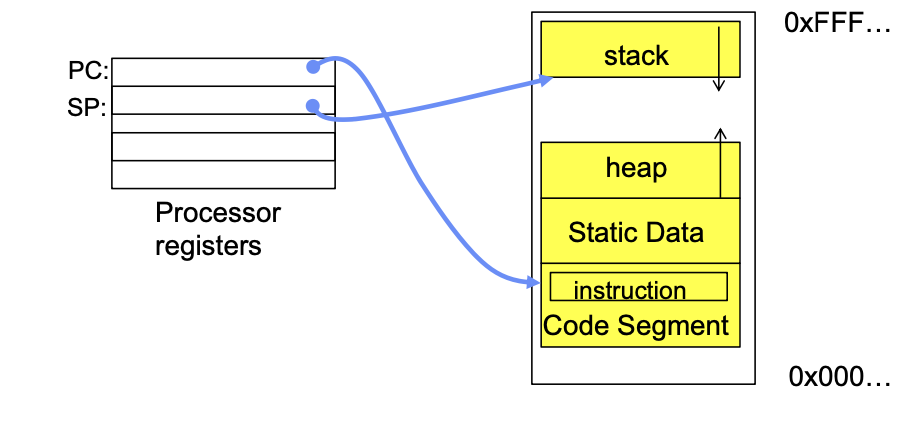
Paged Virtual Address Space
- What if we break the entire virtual address space into equal size chunks (i.e., pages) have a base for each?
- All pages same size, so easy to place each page in memory
- Hardware translates address using a page table
- Each page has a separate base
- The “bound” is the page size
- Special hardware register stores pointer to page table
- Treat memory as page size frames and put any page into any frame
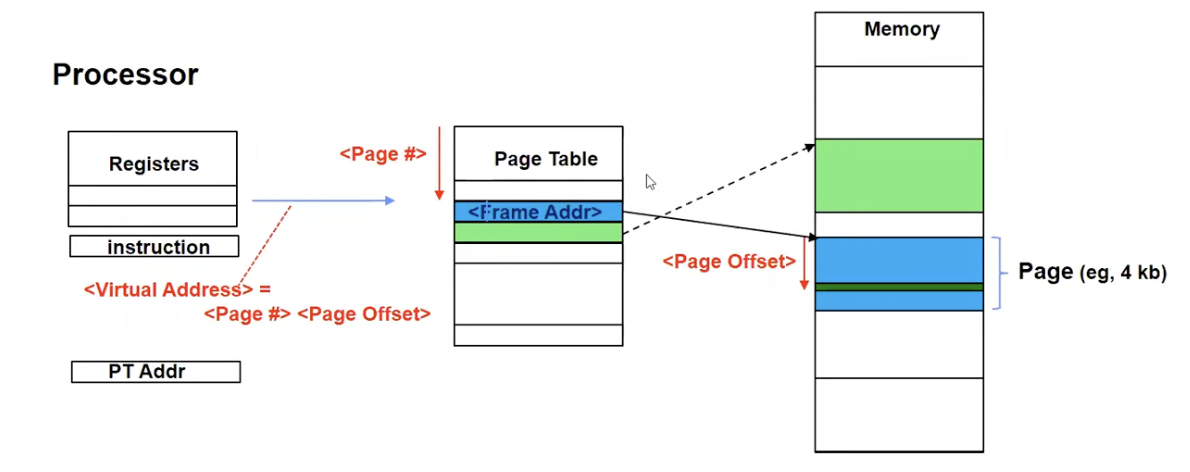
– Instruction address, load/store data address - Translated to a physical address (or Page Fault) through a Page Table by the hardware - Any Page of address space can be in any (page sized) frame in memory – Or not-present (access generates a page fault) - Special register holds page table base address (of the process)
Process
- Definition: execution environment with Restricted Rights
- (Protected) Address Space with
One or More Threads - Owns memory (address space)
- Owns file descriptors, file system context, …
- Encapsulate one or more threads sharing process resources
- (Protected) Address Space with
- Application program executes as a process
- Complex applications can fork/exec child processes
- Why processes
- Protected applications from each other
- OS protected from them
- Processes provides memory protection
- Fundamental trade off between protection and efficiency
- Communication easier within a process
- Communication harder between processes
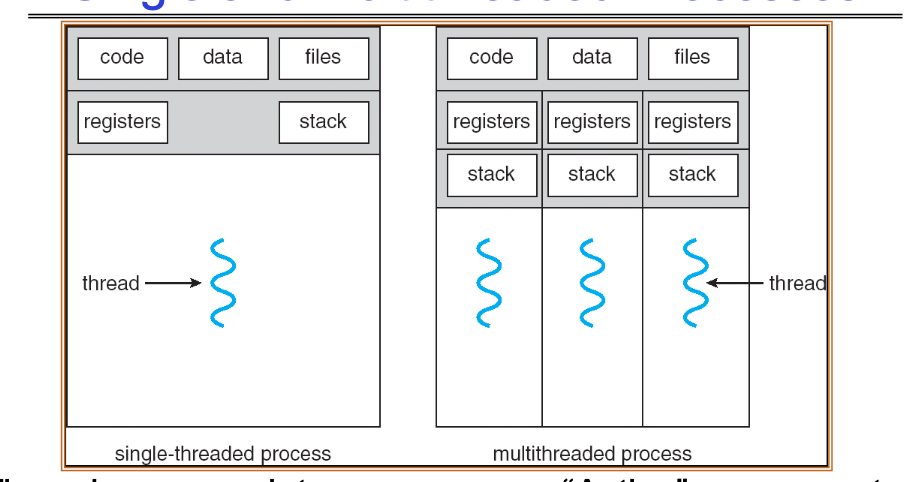
- Threads encapsulate concurrency
- “Active” component
- Address spaces encapsulate protection: “Passive” part – Keeps buggy program from trashing the system
- Why have multiple threads per address space?
- Parallelism: take advantage of actual hardware parallelism (e.g. multicore)
- Concurrency: ease of handling I/O and other simultaneous events
Protection and Isolation
- Why do need processes?
- Reliability: Bugs can only overwrite memory of process they are in
- Security and privacy: malicious or compromised process can’t read or write other process’ data
- Mechanisms:
- Address translation: address space only contains its own data
Dual Mode Operation
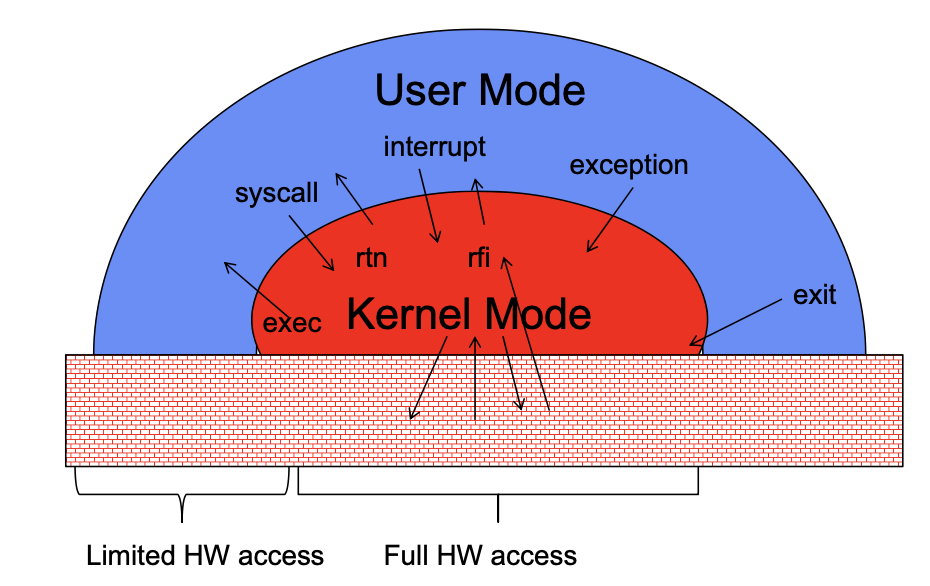
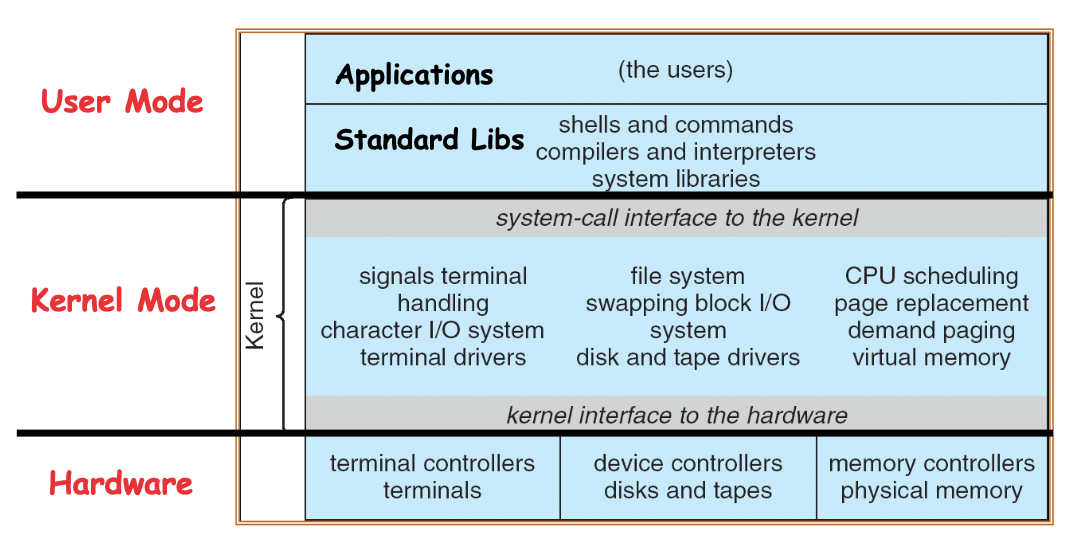
- Hardware provides at least two modes
- Kernel mode (or “supervisor” mode)
- User mode
- Processes execute in user mode
- To perform privileged actions, processes request services from the OS kernel
- Carefully controlled transition from user to kernel mode
- Kernel executes in kernel mode
- Performs privileged actions to support running processes
- …and configures hardware to properly protect them (e.g., address translation)
- Certain operations are prohibited when running in user mode
- Changing the page table pointer, disabling interrupts, interacting directly w/ hardware, writing to kernel memory
- Carefully controlled transitions between user mode and kernel mode
- System calls, interrupts, exceptions
- User to Kernel transition sets system mode AND saves the user’s PC (program counter)
- Kernel to User transition clears system mode AND restores appropriate user PC

